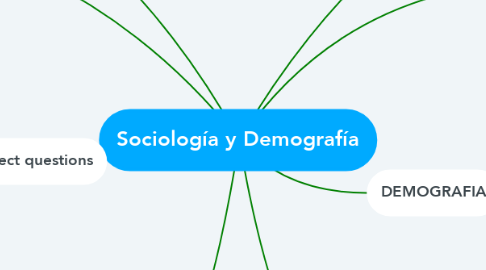Sociología y Demografía
von ASHLEY VANESSA SANCHEZ RAMIREZ


1. They are so called because they are used to identify the object of an action.
2. Look at the following example: John sent the letter.
3. The subject questions
3.1. If we are interested in asking what John sent, the question will have the following structure:
3.1.1. What did John send?
3.2. In the subject questions, the presence of the auxiliary is mandatory (except when it comes to the verb TO BE). The order of the words is the standard order:
3.2.1. interrogative pronoun + auxiliary + subject + predicate
3.3. The interrogative pronoun is the object of the interrogative sentence.
3.4. The subject questions are also constructed with the interrogative pronouns who, which, what, which can lead to confusion with the subject questions.
3.4.1. Who do you believe: her or me?
4. SUBJECT QUESTIONS
4.1. As the name suggests, they are those questions that we use when we want to request information about the subject.
4.1.1. Taking the previous statement as an example, the subject question would say the following, Who kissed Laura ?, to which we would answer: Ben.
5. If we are interested in asking who sent the letter, the question will have the following structure:
5.1. Who sent the letter? (pronombre interrogativo + verbo + complemento)
6. Look at the following example: John sent the letter.
7. DEMOGRAFIA
7.1. La ciencia que estudia la composición, estado y distribución de las poblaciones humanas.
7.2. TIPOS
7.2.1. Demografía estática y demografía dinámica.
8. PURPOSE QUESTIONS
8.1. As the name suggests, they are those questions that we use when we want to request information about the object or complement.
8.1.1. Let's take the following statement as an example: Ben kissed Laura (Ben kissed Laura)
